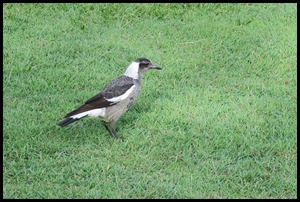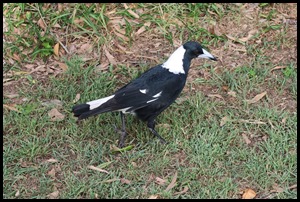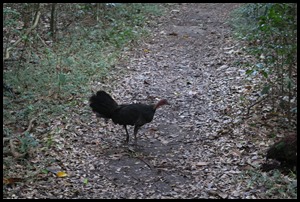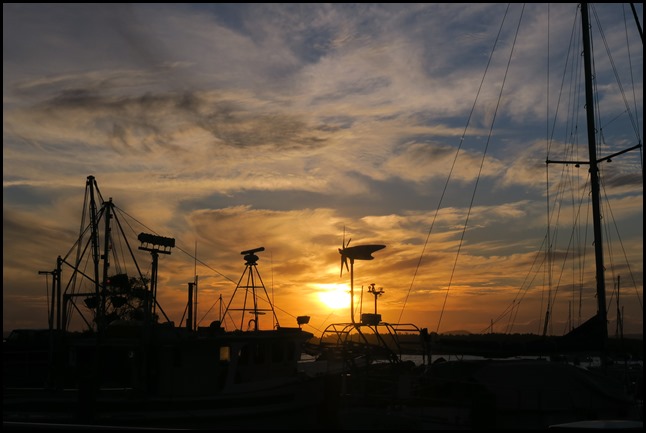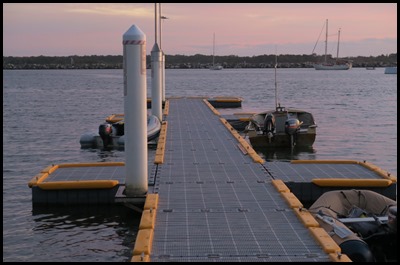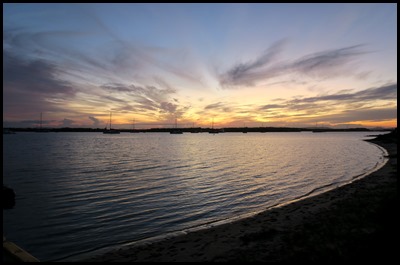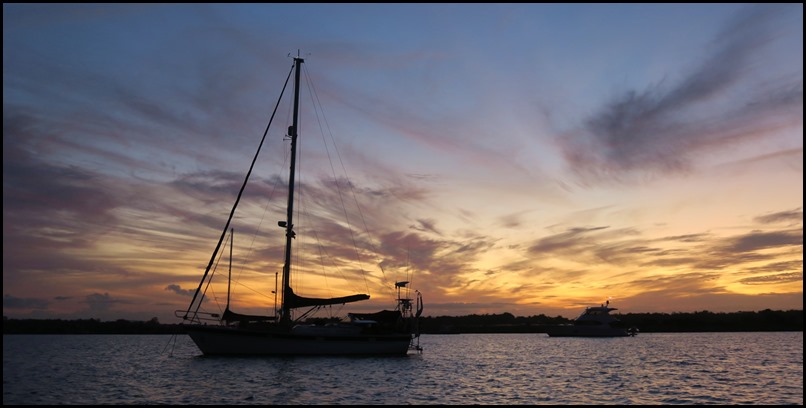Iluka Nature Reserve

|
Iluka Nature Reserve
 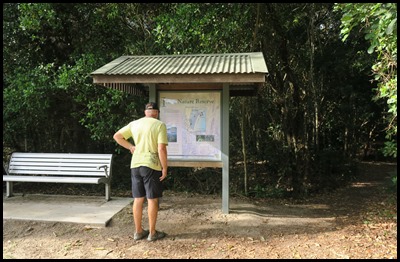 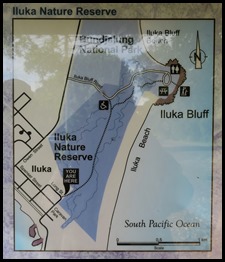 We did some chores this morning and after
lunch set off to explore the forest. The Iluka Nature
Reserve in a protected nature
reserve that is located in the Northern
Rivers region of New South
Wales. The littoral rainforest, one of the last
remaining in the Southern Hemisphere, is part of the Coastal group of the UNESCO World
Heritage–listed Gondwana
Rainforests of Australia, inscribed in
1986. The reserve was added to
the Australian National
Heritage List in 2007.
It contains many different plant species ranging from coastal dune species to
tropical rainforest species. The Iluka rainforest has a vast range of native
animal species ranging from wallabies and kangaroos to wombats and echidnas.
Iluka is known for the rare coastal emu.
Dromalus
novaehollandiae is Australia’s tallest bird reaching between 1.9 and 1.9 metres
in height. Unlike their inland cousins, coastal emus are not highly mobile. They
live in areas of swampy heathland with plentiful water and a diversity of
fruiting plants, all of which are provided in Bundjalung National Park between
Iluka Nature Reserve and Evans Head. With less than fifty coastal emus
left in this area they are listed as an Endangered Population under the
Threatened Species Conservation Act 1995.
Coastal
emus are major large seed dispersal animals that help maintain the diversity of
plant species of Bundjalung, they are a part of the unique coastal heritage and
a national icon that needs to be protected. Threats come from feral animals,
road kill, habitat loss and wildfire. We will be keeping a sharp eye out along
with anything else to be seen.
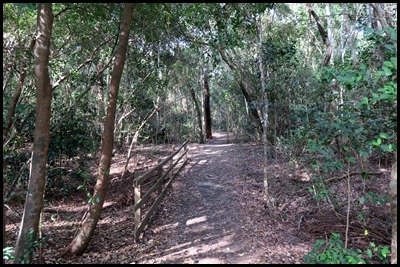 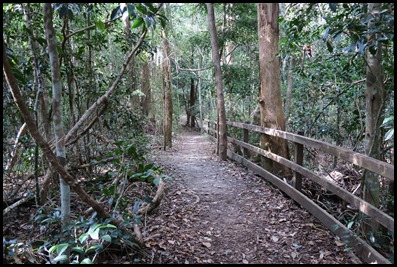 The entrance to the forest was just a short walk down
the road from the pub. As soon as we began bimbling the
track we could hear plenty of birdsong.
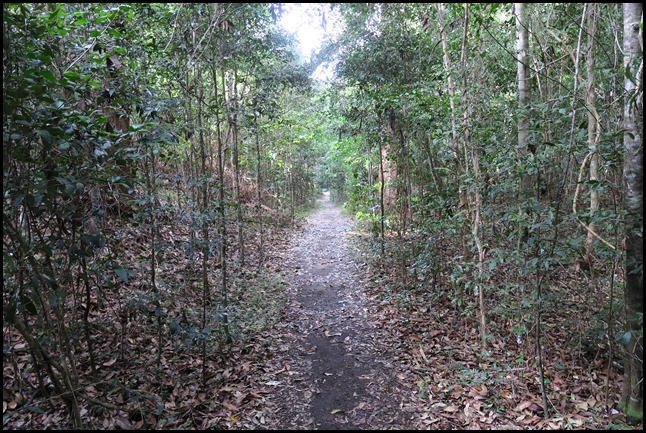 Iluka Nature Reserve protects 136 hectares, much of
which is littoral (coastal) rainforest. Littoral rainforest simply means ‘by the
sea’ and features elements of both subtropical and dry rainforest. It requires
shelter from constant salt-laden winds and has evolved a low canopy made up of
salt-tolerant, blunt leaved trees.
Often found as a remnant on the southern side of
coastal headlands, littoral rainforest represents only 0.6% of all rainforests
and is the most poorly conserved type of rainforest in New South Wales. Most of
the remaining littoral rainforest grows on sand which is well drained and
nutrient poor, making its existence here even more
remarkable.
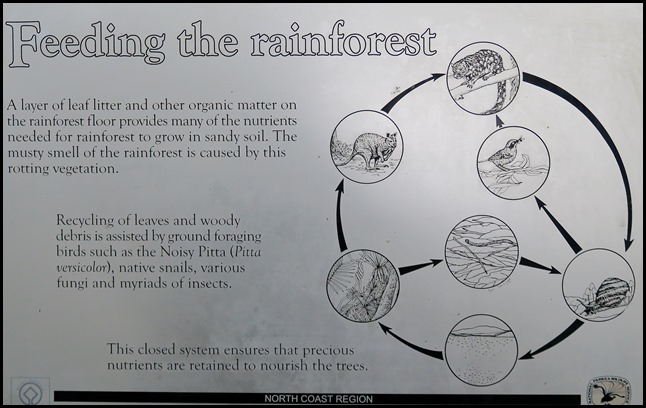 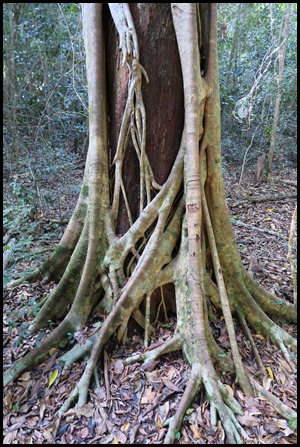 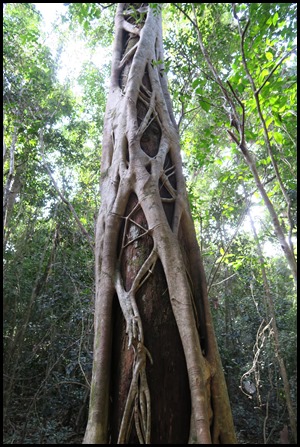 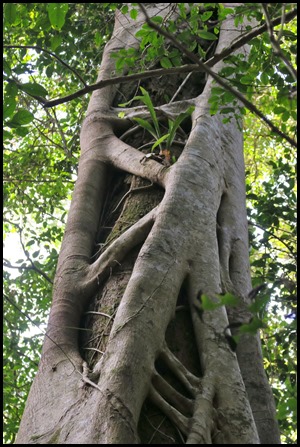 Stranglers and Supporters: One of the most distinctive
trees found at Iluka Nature Reserve is the Strangler
Fig (Ficus watkinsiana). It begins life as a tiny seedling lodged in the
fork of a host tree, eventually engulfing and killing the original tree. Other
specialised plants known as epiphytes are not parasitic, but rely on trees for
support only. Epiphytes live on nutrients from rotting leaves or animal
droppings, and include the Elkhorn (Platycerium bifurcattum) and the Birds Nest
fern (Aspenium australasicum).
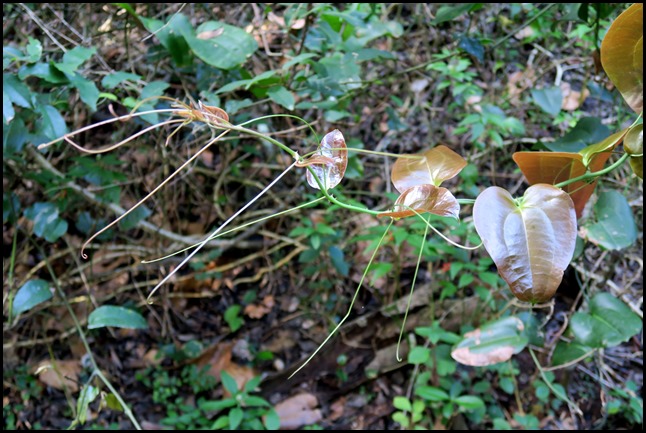 Vines such
as Native Hoya (Hoya oligotricha) climb upwards to the sunlit canopy of the
littoral rainforest. Vines have evolved a number of climbing methods such as
tendrils that grasp (a baby we found waiting to
find something to grab hold of), in the Long-leaved water vine (Cissus
sterculifolia) and spiny stems that stick, in the Burny Vine (Malaisia
scandens). Unfortunately garden escapees such as Madeira Vine and climbing
asparagus have invaded some parts of the rainforest where they smother smaller
rainforest plants and mature native trees. The NSW National Parks Wildlife
Service and the Iluka Dunecare and Landcare Group have joined forces to control
weeds in the Nature Reserve.
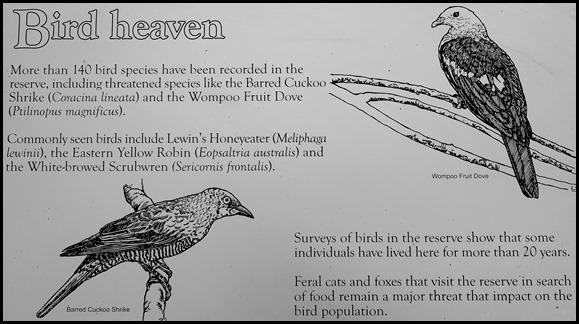
Our tally of birds, plus we saw finches
– too quick, and a honeyeater.
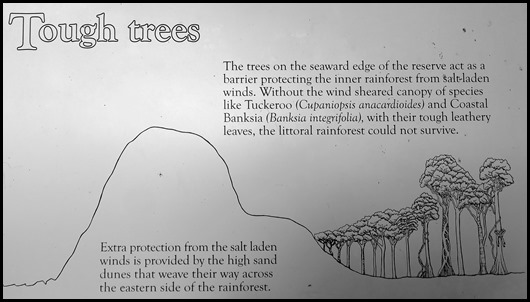 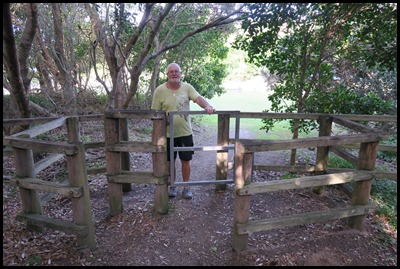 We came to the end of the track, through
the kissing gate, across the car park and had a while
on the beach.
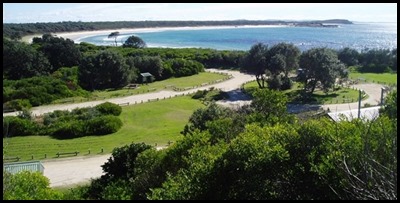 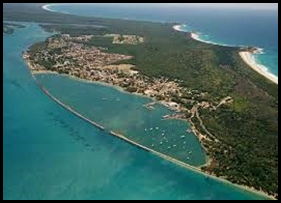 Then up to the lookout, this way looking
over the picnic area and north. We were looking at
the ‘sticky out bit’ on the seaward
side.
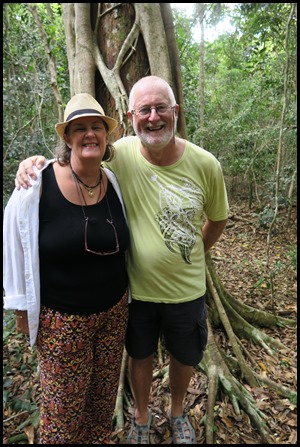 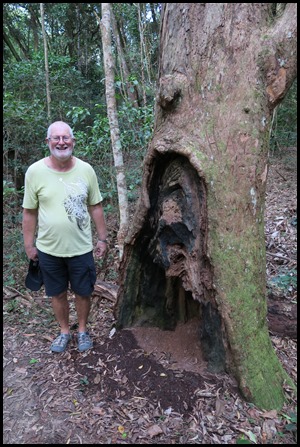 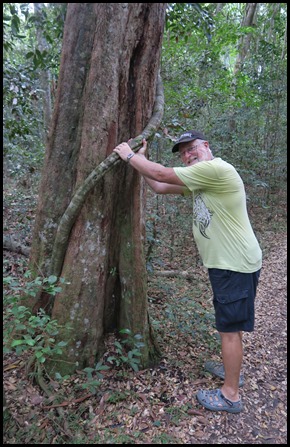 On our walk back, a kindly man suggested he take our picture, with that he jumped off his bike and did just
that. Bade us a “good day” and disappeared. The middle tree, on looking
up, was in perfect health despite looking like a
beaver had been at it. My Tarzan, My Protector
wrestles a baddie...........
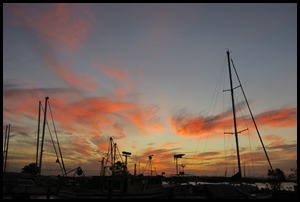 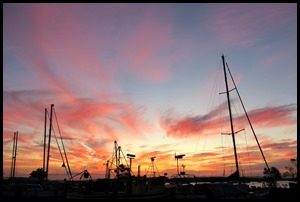
We bimbled a total of three and a quarter miles ending at the fish and chip shop, where we watched the sun going down. Then home to be once again mashed at Mexican train dominoes. Yes, but, who snuck two games of backgammon and a ton of money. It was a deal I signed very hesitantly that you wouldn’t whine about my backgammon if I didn’t put up too much protest to the Mexican, but I don’t like the four all last minute battles, I like winning five one or two. Huh.
Bear had notice a sign saying the ‘posh’ dinghy dock was constructed under the NSW Government’s Better Boating Program. This NSW Maritime initiative provides infrastructure for the benefit of the community using funds from boating fees. This project was jointly funded by NSW Maritime, Clarence Valley Council and McGeary Bros Earthmoving. 2010. Well done and thank you from impressed yachties. We were treated to a pretty sunset across the bay and an awesome one as we approached the girl.
ALL IN ALL A VERY ENJOYABLE BIMBLE GOOD EXERCISE IN AN UNUSUAL FOREST |
